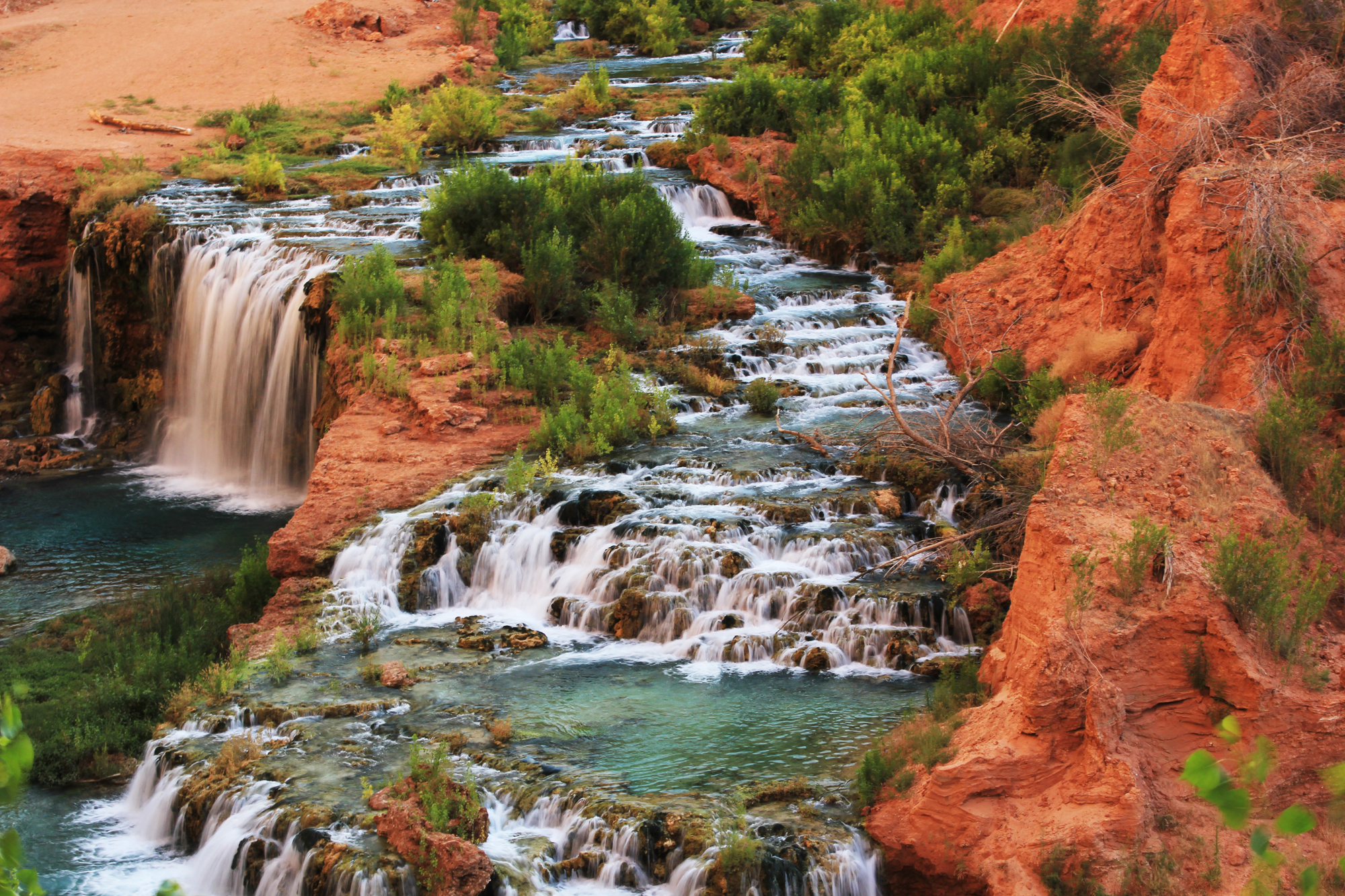The Havasupai, Native American people, have lived in this canyon in excess of 800 years. At one time they claimed an area of 1.6 million acres.
In 1870 silver was discovered in the area. The migration of prospectors started and was unwelcomed.
In 1882 the federal government forced the Havasupai to abandon all but 518 acres. This was brought on by the Silver Rush and the Santa Fe Railroad. Further the Grand Canyon National Park, 1919, impacted the use of the land.
From 1885 to 1901 mining was extracting mostly Lead ore, and Silver ore. About 100 tons of high grade ore was shipped out of the canyon during this period.
Can you image trying to transport ore out of this area?
In 1902 a mining company name the “Grand Canyon Gold & Platinum Co attempted to build a road into the area. Part of that is still used as a trail by the Supais.
Around 1932 a tram was proposed to transport ore to the top of the canyon.
In addition to lead and silver there were large deposits of Vanadium.
The campground area as we know it today was once the location of a hard rock mining camp known as the Havasu Lead and Zinc Company. Tunnels are scattered throughout the area. Many of them in the campground area. The deepest of which is about 300 ft.
The largest of the mines is in Carbonate Canyon, a side canyon at the base of Havasu Falls. There are still rails and timbers that descend 3 levels. The tailings pile is easy to spot, as is the mine entrance. It was last mined during WWII for lead.
Through the 20th century the tribe used the US Judicial system to reclaim their land.
In 1975 the tribe succeeded in regaining approximately 185,000 acres of their ancestral lands. Over 100 years later.
We need your info and photos to create or upgrade this page! Help us improve this page. Email info to Info@Toponautic.com
![]()
